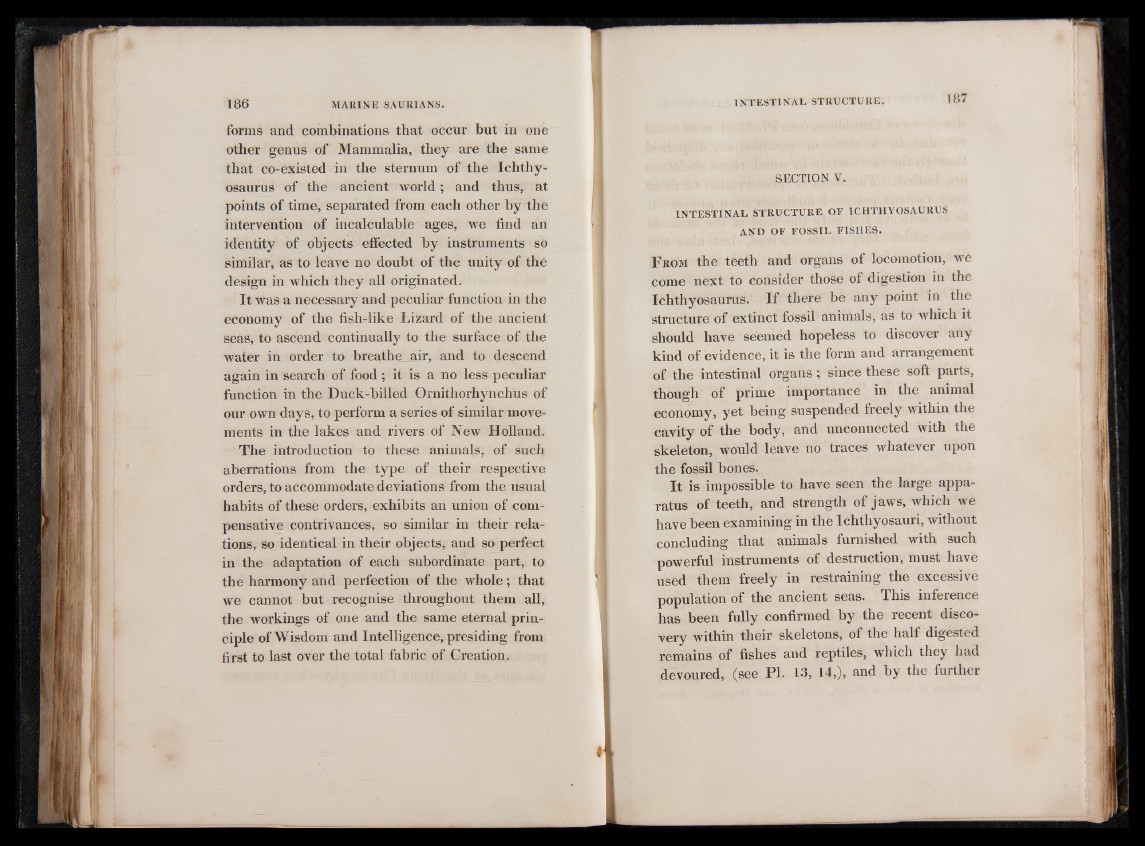
forms and combinations that occur but in one
other genus of Mammalia, they are the same
that co-existed in the sternum of the Ichthyosaurus
of the ancient world; and thus, at
points of time, separated from each other by the
intervention of incalculable ages, we find an
identity of objects effected by instruments so
similar, as to leave no doubt of the unity of thé
design in which they all originated.
It was a necessary and peculiar function in the
economy of the fish-like Lizard of the ancient
seas, to ascend continually to the surface of the
water in order to breathe air, and to descend
again in search of food ; it is a no less peculiar
function in the Duck-billed Ornithorhynchus of
our own days, to perform a series of similar movements
in the lakes and rivers of New Holland.
The introduction to these animals, of such
aberrations from the type of their respective
orders, to accommodate deviations from the usual
habits of these orders, exhibits an union of compensative
contrivances, so similar in their relations,
so identical in their objects, and so perfect
in the adaptation of each subordinate part, to
the harmony and perfection of the whole; that
we cannot but recognise throughout them all,
the workings of one and the same eternal principle
of Wisdom and Intelligence, presiding from
first to last over the total fabric of Creation.
SECTION V.
IN T E ST IN A L STRUCTURE OF ICHTHYOSAURUS
AND OF FOSSIL FISHES.
F rom the teeth and organs of locomotion, we
come next to consider those of digestion in the
Ichthyosaurus. I f there be any point in the
structure of extinct fossil animals, as to which it
should have seemed hopeless to discover any
kind of evidence, it is the form and arrangement
of the intestinal organs ; since these soft parts,
though of prime importance in the animal
economy, yet being suspended freely within the
cavity of the body, and unconnected with the
skeleton, would leave no traces whatever upon
the fossil bones.
It is impossible to have seen the large apparatus
of teeth, and strength of jaws, which we
have been examining in the Ichthyosauri, without
concluding that animals furnished with such
powerful instruments of destruction, must have
used them freely in restraining the excessive
population of the ancient seas. This inference
has been fully confirmed by the recent discovery
within their skeletons, of the half digested
remains of fishes and reptiles, which they had
devoured, (see PI. 13, 14,), and by the further